Ah yes. Leash reactivity. If your Great Dane is aggressive on leash, but not necessarily off-leash, this post is for you. Of course, some dogs are are reactive both on and off leash, and this post will have valuable information for them, too!
Leash aggression is a really frustrating and dangerous problem, especially when it comes to giant breed dogs.
There is nothing worse than trying to take a peaceful walk when your 140 pound dog makes an absolute fool of himself over another dog or person walking by.
It’s embarrassing, it causes a lot of anxiety, and the list of scenarios where something goes horribly wrong are pretty insane to think about.
I don’t know about you, but I have no tolerance for Great Danes being aggressive on a leash. So let’s dig into this.
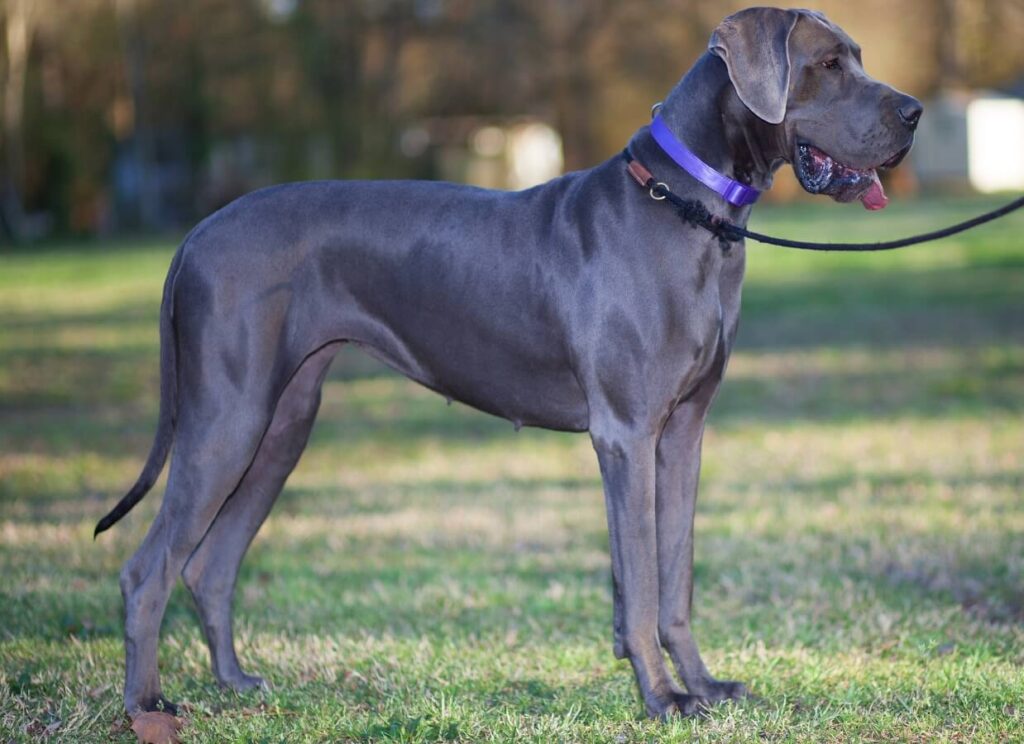
What Causes Leash Reactivity
To better understand how to treat this behavior, we have to look at why it happens in the first place.
Dogs communicate with other dogs through subtle body language. When stable, well-socialized dogs approach each other, they do so in a non-threatening way by turning their body slightly to the side and keeping their ears, mouth, and tail relaxed and neutral.
Both dogs watch each other for signs that they are uncomfortable or excited, and the communication between the two dogs continues until one or both make a decision to proceed or walk away.
Off-leash dogs are able to both express natural non-threatening body language, AND escape and retreat from dogs that show signs of discomfort.
When a dog cannot escape, or is unable to move forward towards something that they find interesting, scary, or fun, tension from the leash is transferred into the dog via the connection point (collar, harness, etc.).
As you can imagine, this tension is very, very frustrating.
Leash reactivity and its root cause are incredibly simple. To put this bluntly, a leash reactive dog is frustrated.
Making matters worse, the repetition of this cycle of excitement or nervousness paired with the restrictive leash teaches the dog to anticipate tension when seeing another dog (or whatever it is that they tend to react to).
The anticipation of this tension in and of itself causes many dogs to start bubbling up with negative or frustrated feelings even before the leash becomes tense. It is at this point when owners lose control.

What Does Leash Reactivity Look Like?
Many people think that leash reactivity only means aggression. Of course, dogs that snarl, snap, and lunge on a leash are being aggressive.
However, for some dogs, leash reactivity presents as nervousness or excitement!
Some dogs will shut down, pin their ears, lean, and may even spin circles or pull forward trying to protect themselves or leave the situation. These dogs may be perfectly confident off-leash, but being on leash makes them nervous and anxious.
Other dogs will jump, whine, wiggle, lunge, and basically flip out trying to get out of their collar so they can greet another dog. This too is a form of leash reactivity, even if it’s not aggressive or protective in nature.
Either way, these behaviors are dangerous. It is very difficult to control a giant breed dog that is nervous, anxious, or frustrated on leash.
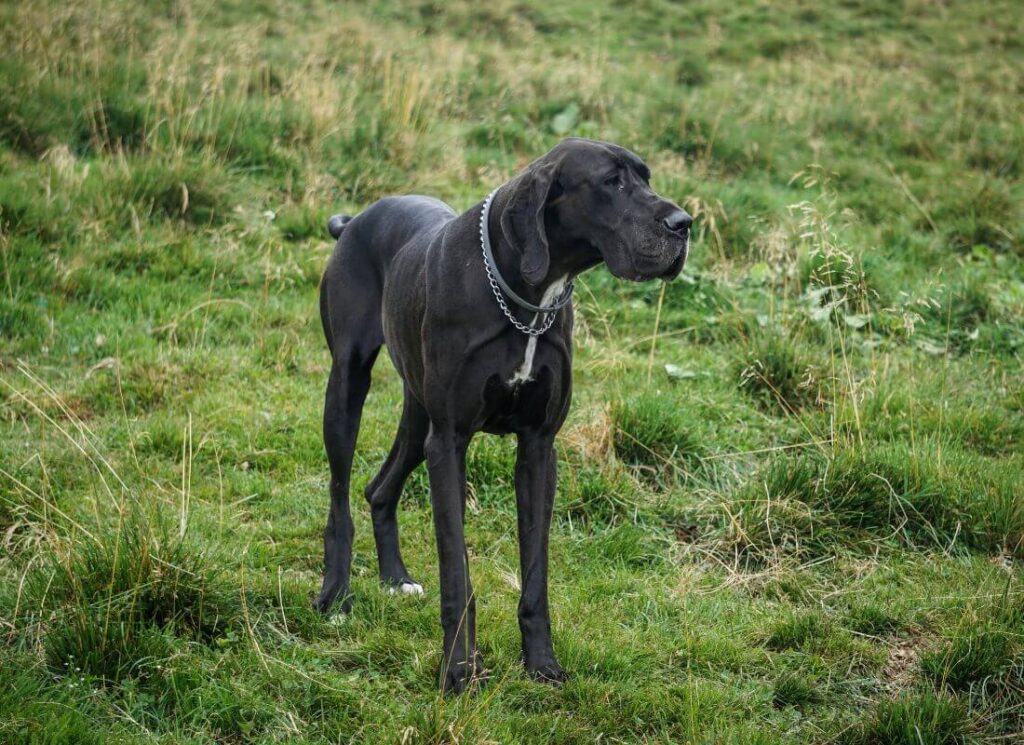
How to Prevent a Dog From Becoming Leash Reactive
If you already have a leash reactive dog, this ship has probably sailed but this section will help you better understand how to work towards prevention in the future.
Here are common reasons why dogs become leash-reactive as they mature:
- The dog has been allowed to pull, especially early on
- As a puppy the dog was allowed or even encouraged to approach all people and dogs for “socialization” purposes, even if they were lunging at the end of a leash to do so
- The dog has spent more time approaching dogs and people off-leash at will than they did learning how to politely ignore dogs while on a leash
- Poor leash handling/handler skills, including a lack of confidence and direction
- Incorrect use of training tools including harnesses, collars, electric collars and prong collars
- Lack of correct socialization (learn more about this in our guide HERE)
- The dog has an unstable or insecure temperament
- Excessive force and tension on the leash, coming from the handler, including harsh corrections
- Boredom (when taking a walk is the most exciting part of the day, dogs will often seek excitement during the walk)
- Coddling a dog during a reaction or while they are anxious or fearful
- Rewarding the dog for reacting by removing the thing they are reacting to, or by allowing them access to it (instead of teaching them to ignore it in the first place)
Some dogs with incredibly stable temperaments can be poorly socialized and never trained and they will be amazing on leash no matter what.
For many dogs, however, leash reactivity is the result of multiple compounding problems. Remember, it’s rooted in the restrictive and frustrating nature of being on a leash.
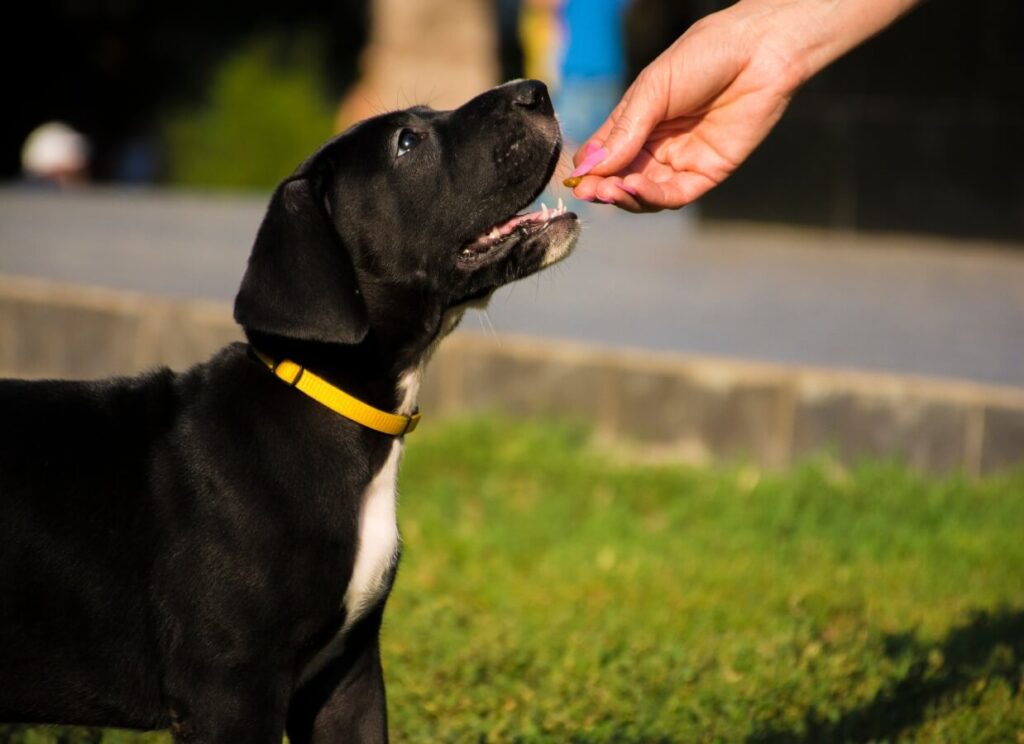
How to Stop Leash Reactivity in Great Danes
If you have a leash-reactive Great Dane, it stops here. Now. Today.
Before you can address leash reactivity, you must prevent it from occurring in the first place. Keep in mind that every time your dog practices the behavior, it is further reinforced.
Take away the foundation.
This may mean only walking when no other people are likely to be out, driving somewhere quieter, or finding other forms of enrichment such as a backyard scent work kit or FitPaws-inspired obstacle course.
This is temporary! In no way should you remove your dog’s access to the world entirely; isolation as a form of training is not a good answer. But for now, you should focus heavily on managing and preventing the behavior.
Note: If your Great Dane is aggressive on leash and seeks to harm, extra steps must be taken to protect other people and dogs. We highly recommend working with a trainer. Depending on the nature of the aggression, muzzle training may also be warranted.
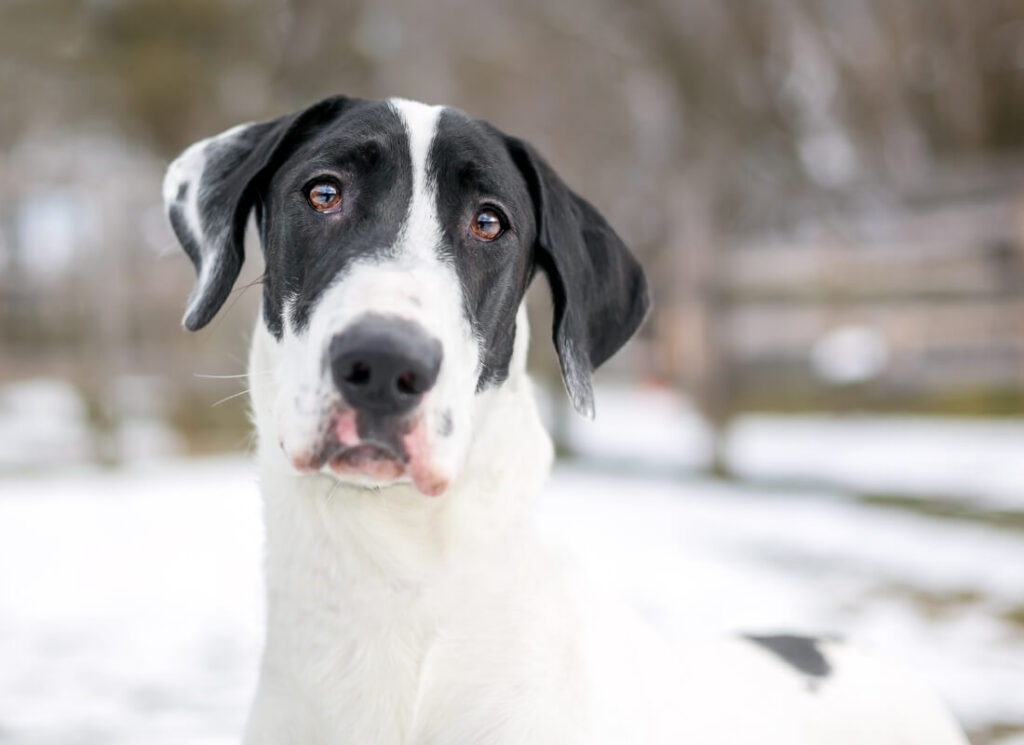
Step One – Keep Your Reactive Dog Safe & In Control
In addition to the above considerations, ALL leash reactive dogs must be on secure equipment. Avoid tools that break, are easy to escape from, or that make it difficult to physically control the dog during an outburst. Even if you visit somewhere that the reaction is unlikely to happen, it’s important to keep your dog safe.
Tools that are NOT appropriate for leash-reactive dogs include:
- Flat buckle collars, especially the type with a plastic latch
- Chain/choke collars (harsh correction that tends to escalate reactivity in the wrong hands)
- Front clip “T” shaped harnesses such as 2-Hounds Freedom or Easy Walk no-pull (adds tension to the shoulders, restricts movement, and are very easy to escape from)
- Any harness or collar the dog can slip out of
- Retractable leashes (very dangerous!)
- Head collars/gentle leaders (for dogs that lunge or pull, these can cause a lot of damage)
- Cheap shock collars used to harshly correct outbursts (or any electric collar that is used incorrectly)
- Any kind of leash with a cheap/wimpy clip and/or that is difficult for the handler to hold onto
Instead, I highly recommend the use of the following tools for dogs that are aggressive or reactive on leash:
- A wide, flat martingale collar such as this one
- A slip collar such as this one (use with trainer guidance)
- A slip lead like this
- An properly fit harness from Ruffwear, like this Flagline Harness
- The Herm Sprenger Prong Collar (use with trainer guidance) with a safety clip
- A quality long leash (for working in low-distraction areas)
- A study 6-8 foot leash of your choice
The above tools make it easier to control your dog and won’t allow them to easily pull out of their equipment and escape or act on their frustrations.
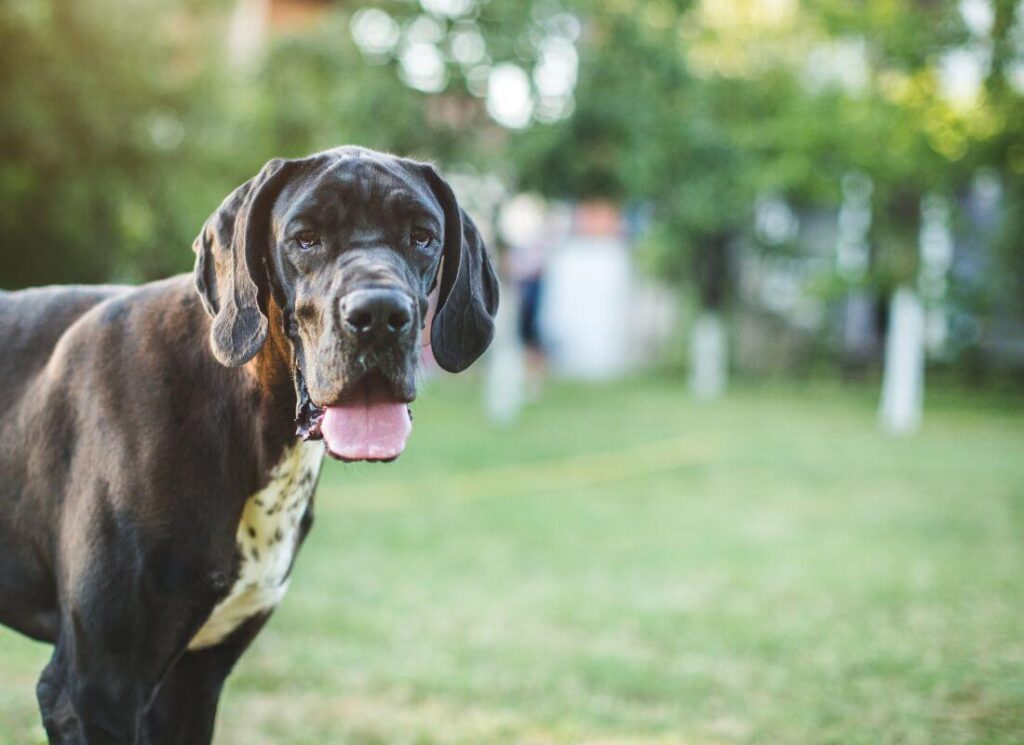
Step Two – Teach the Correct Alternative Behavior
Before you can really address leash reactivity, your dog needs a clear picture of what they should be doing instead. If your dog already has great leash skills in general (doesn’t pull, looks at you on command, stops by your side and waits), you can probably skip this step.
Otherwise, it’s back to basics!
Start in a low distraction area such as your living room. Use treats, praise, and play to teach your dog to walk by your left side.
At first, you may have to reward your dog for taking just one step with you. After consistent practice, you should be able to walk all over your house with your dog by your side, no matter how many twists and turns you throw in there!
This is something you have to teach, and it’s a step many people skip.
Once your dog understands how to walk by your side on command, practice the skill in your yard or in other areas nearby that are free of distractions. Clip a loose leash to your dog and continue practicing. Don’t forget to add in stops and turns!
If your dog doesn’t have this basic skill thoroughly installed, you’re going to struggle with addressing leash reactivity. Remember, leash reactivity is caused by tension and if your dog never pulls, there will be no tension.
Remember to ONLY use the equipment listed above; as you move towards situations where reactivity can happen, it’s important that you can maintain control.
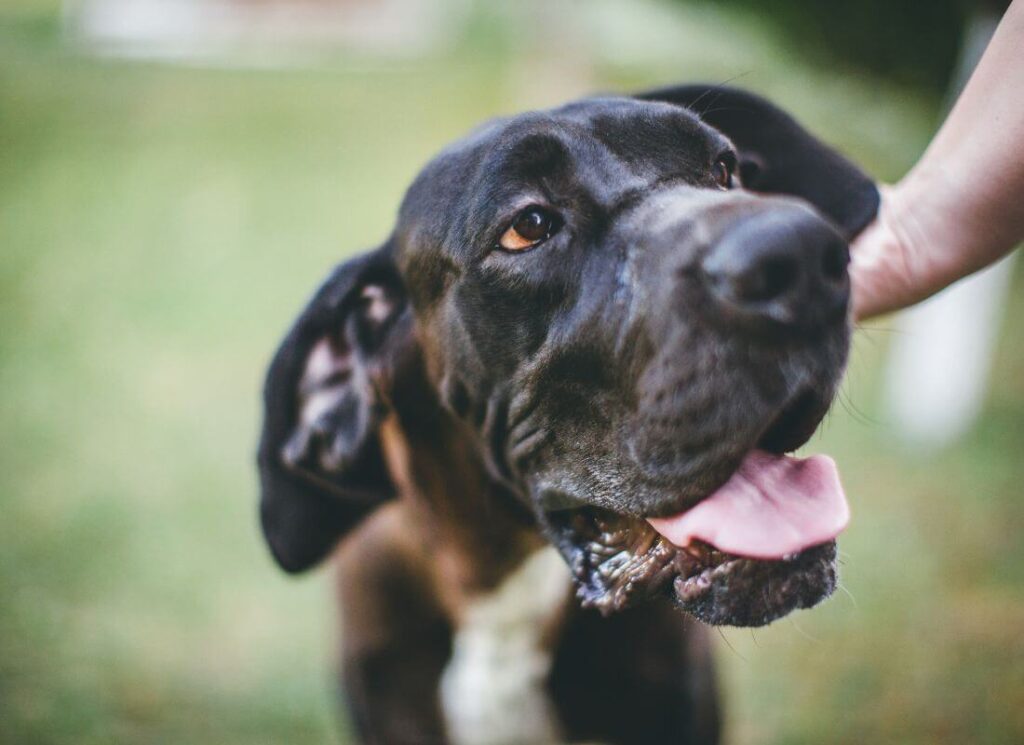
Step Three – Re-Socialize Your Reactive Dog
One of the biggest mistakes people make in puppyhood is that they allow their puppy to pull on the leash and greet all people and dogs at will.
This causes reactivity and aggression. It has the opposite affect as intended!
Now imagine your leash reactive Great Dane is a puppy, and we’re going to reset things a bit here.
Dog training secret: good socialization means learning to ignore distractions in the environment, and to only interact with them when it’s safe and appropriate.
A dog that has been taught through proper socialization to be indifferent towards dogs and people in the environment (vs rushing up to them and pulling in the process) will not be leash reactive.
Take your dog out on a longer, loose leash to your front yard or a huge park where you can safely work with your dog but not trigger reactivity, frustration, or anxiety.
Sit in the grass together. Watch people and dogs walk by. Use praise, treats, and play to reward your dog for engaging with YOU, not dogs and people they see milling about nearby.
With time, you can gradually close the gap between you and the distractions. Never close that gap more than your dog can currently handle though.
Pro Tip: Do NOT let well-meaning people approach and ask for a greeting. The goal here is to show the dog that people and dogs in the environment are just ‘there’ and don’t always mean getting to play, lunge, or go nuts.
The more time you can spend doing this, the better! Replace your daily walk with this activity for even a week and you’ll start to notice a massive improvement in your dog’s ability to ignore reactivity triggers in the environment.
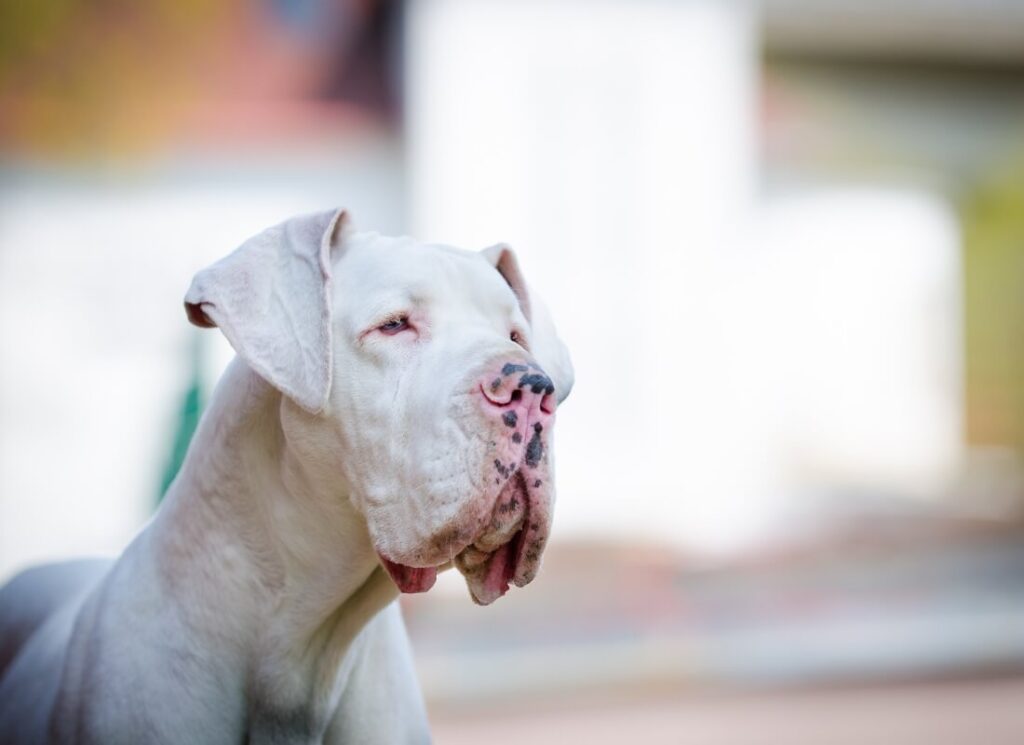
Step Four – Counter-Condition and Desensitize
The next step is to teach your dog that seeing dogs or other triggers in the environment is actually a positive thing and does NOT result in leash tension.
If you address leash reactivity by become frustrated, shouting, and popping the leash then YOU are actually part of the problem.
Start in a place where you see no other dogs or people. Come up with a trigger word such as “pineapple” or “woof”, or use a clicker.
Engage your dog with you, then say the trigger word or click the clicker, and immediately give your dog a treat. Repeat this several times until your dog will hear the trigger word or the clicker and look at you in anticipation of a reward.
This is Pavlov! The dog will quickly learn to associate this word with something good. It is very helpful to use this word (or the clicker) several times throughout the day at first, in different places, so your dog learns it thoroughly.
Pro tip, make sure your dog isn’t doing something they shouldn’t be when you say the trigger word or click!
Next, go back to the quiet spot on the lawn or a park where you can see dogs and people from afar. As soon as you see one, say your trigger word (or click) and immediately reward your dog!
With time and repetition, your dog learns that distractions in the environment result in their favorite new word.
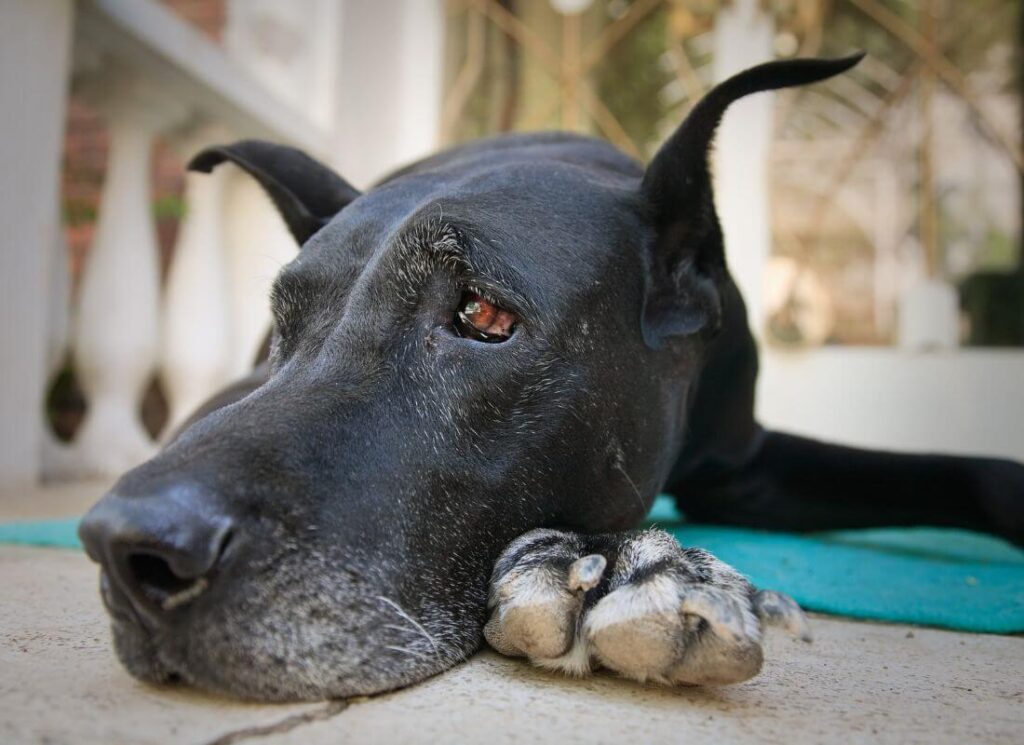
Step Five – Correct & Redirect
This is the part people always want to know how to do.
Correct and redirect. Yes, there is a time and a place for this.
Enter the Herm Sprenger Prong Collar with a safety clip.
A properly used Prong collar does not actually poke and stab your dog. Unlike other ‘no-pull’ tools, it actually results in a very clear yes/no communication that is based on even pressure around the neck.
Because you’ve followed the steps above and worked a lot on teaching the correct behavior and reducing the emotional response to triggers, you can start applying some correct/redirect action.
To be perfectly honest, no matter how much time you had put into this up to this point, odds are, your reactive dog can absolutely still make a fuss. Don’t be complacent.
As your dog shows signs that they are able to ignore distractions from 10 or 15 feet away, start taking them to the edge of their comfort level.
The moment your dog starts to tense up, correct (a tiny wrist-action pop of the prong collar), reward your dog for responding to the correction, and redirect. Remember you can still also use your trigger word/clicker for the positive association as well.
With time and practice, even the most reactive dog is going to be able to calmly and confidently walk past another dog on a leash! The trick here is to issue the correction (like a tap on the shoulder saying “uh uh, we’re not doing that“) before the reaction becomes an explosion.
By bringing your dogs focus back to you, you can immediately then ask for a correct behavior, reward your dog, and move on with your day.
Some trainers and many people skip the first several steps and go straight towards correct and redirect. While this can be effective in the short term, it is my personal belief that a more holistic and comprehensive approach rooted in creating positive associations and resetting socialization experiences will be more beneficial and reliable for all involved.
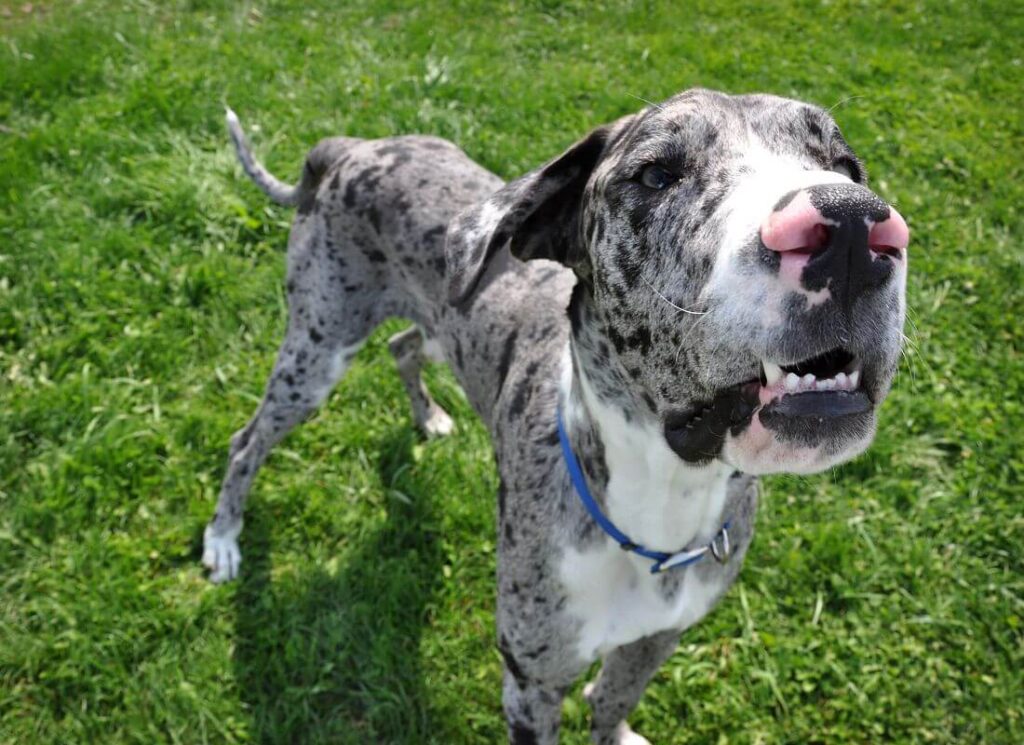
Do you have a Great Dane that is aggressive on a leash? Are you struggling with reactivity?
Join us in our Facebook community and ask questions, we are here to help!

Leave a Reply